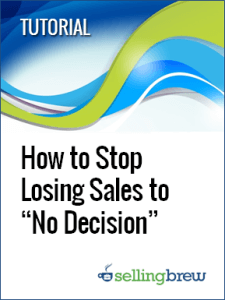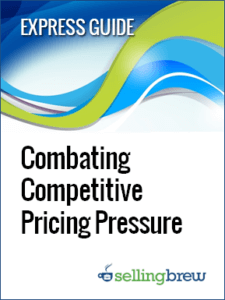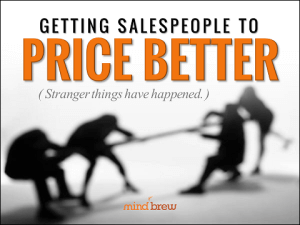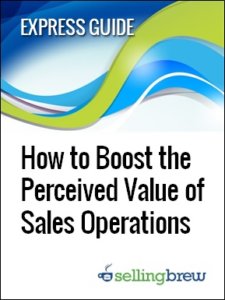Some sales strategists recommend that salespeople build up customers’ fear, uncertainty and doubt (FUD) about competitive solutions. Their reasoning is that if people are worried or unsure about a competitor’s product, they will be more likely to choose your product.
We’re not going to beat around the bush here—we think that FUD stinks as a sales strategy.
Sure, FUD succeeds some of the time, but only in very specific cases, and the potential downside simply isn’t worth the risk.
Behavioral economists tell us that people have a strong bias for the status quo. Even when presented with options that are clearly superior to the way things are, people will often choose “the devil that they know” rather than taking a perceived risk with something new. This is one of the reasons why incumbent politicians have an advantage at election time and why people demonstrate brand loyalty.
In many B2B sales situations, the status quo is your biggest competitor. Often, prospects don’t have to buy anything. The salesperson must convince them that doing nothing represents a greater risk than buying your solution—and that can be a big hurdle.
People often point to IBM’s tactics in the 1970s and 80s as an example of successful FUD sales tactics. At the time, IBM salespeople frequently told customers and prospects, “No one ever got fired for buying IBM,” raising doubts about what would happen if they purchased a competitor’s products.
One of the reasons why this strategy worked well for IBM was that most companies were already buying IBM products. In essence, buying from IBM was the status quo. Raising FUD made it more likely that people would continue doing what they were already doing, which was buying from IBM.
If your company is as dominant in your market as IBM was in the 70s and 80s, then FUD might also work for you. But since that’s probably not the case, FUD probably isn’t a good tactic.
B2B salespeople sometimes forget that customers aren’t just choosing between your solutions and your competitors’ solutions. In most cases, customers also have the option of choosing nothing at all. In fact, B2B companies lose up to 40 percent of their forecasted deals to no decision.
Most of the time, the last thing you want to do is increase the prospect’s FUD because fear, uncertainty and doubt are only going to increase the chance that you lose the sale to no decision.
A much better approach is to treat the no decision possibility as your biggest competitor. Develop competitive kill sheets that specifically target the weaknesses of the no decision option. If you aren’t sure how to get started, we have a workbook that can help.
If you really want to win more sales, don’t increase FUD—help your prospects achieve clarity. Having a list of “knocks” on the competition, including the no decision competition, can help you help them achieve that clarity in a way that makes it more likely that you’ll get the sale.












